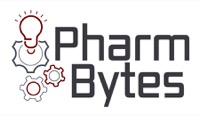
Health systems and other sites of care should never pay a ransom demand from a cyberattacker, even if that seems to be the most expedient way to get back into business, an internet security specialist warned during a presentation at the NASP 2024 Annual Meeting & Expo, in Nashville, Tenn.
Some insurers will encourage paying a ransom, knowing they will have ways to claw back that money later, noted Carl Mazzanti, BSBA, the president of information technology consulting firm eMazzanti Technologies, in Hoboken, N.J. But this just means that the site of care will be seen as an easy mark vulnerable to future ransom demands later, he stressed.
“If an insurer says to pay a ransom, your response should be to say ‘thank you for your guidance’ and show them the door,” he said.
Mr. Mazzanti added that it’s far better to plug whatever holes the cyberattacker exploited, even if this leads to a temporary halt in operations, rather than to pay and encourage further extortion.
As for actually preventing these attacks from crippling your operations, one key area to consider is the proper use of passwords. For a long time, strong passwords were viewed as the first line of defense against cyberattacks—perhaps 16 or even more characters, with a combination of letters, numbers, symbols and text in both upper- and lowercase. But Mr. Mazzanti said this approach will not cut it.
“Passwords are dead; they really are,” he argued, because few people like using strong passwords, and instead end up using the same easily crackable password across multiple applications. A better approach is multifactor authentication, which typically involves someone typing a password and then receiving a PIN to their mobile device, which they must enter to access a database or website. Many insurers require multifactor authentication, Mr. Mazzanti noted, and may not pay damage claims from a cyberattack without it.
“If you layer a bunch of [cybersecurity strategies] on top of each other, it works,” he said. This includes using automated and artificial intelligence–backed tools such as SIEM/SOC (a Security Information and Event Management/Security Operations Center) that help prevent data breaches. SIEM/SOC also will issue alerts about ongoing cyberattacks, hunt for threats and report on any other vulnerabilities in your digital environment.
Pharmacists also should conduct penetration tests, available for free from the Department of Homeland Security, to determine whether critical servers are susceptible to a cyberattack, Mr. Mazzanti said. He cited a final prevention strategy: restricting access to internet content based on the user’s geographic location. Known as geoblocking, [“it’s] free, but very few people do it.”
Dashboard Shortens Therapy Gaps and Speeds Medication Delivery
Specialty pharmacists at Vanderbilt Health have built user-friendly dashboards that guide patient care in various situations and have improved the speed of coverage appeals when insurers deny a needed medication for treating inflammatory bowel disease (IBD).
These projects were featured in a session about improved patient monitoring and engagement at the ASHP Midyear 2024 Clinical Meeting & Exhibition, in New Orleans.
“For our IBD dashboard, our pharmacists noticed that patients were having gaps in therapy because they weren’t getting their labs done on time,” said Kristen Whelchel, PharmD, CSP, the program director for patient care improvement health outcomes and research at Vanderbilt Specialty Pharmacy, in Nashville, Tenn. “It’s a pretty strict protocol in that clinic that if patients do not have up-to-date labs, they will not get a new prescription for their medicine.”
If a patient has no prescription refills and their lab work is not up-to-date, a gap in IBD therapy results.
The dashboard integrates prescription refill data, laboratory results and schedule data into a single feed. It alerts the specialty pharmacist that a treatment gap is looming, allowing them to contact the patient to schedule labs sooner (Am J Health Syst Pharm 2023;80[suppl 2]:S55-S61). Before implementation, 80% of patients with outdated lab work (12/15) had therapy gaps; afterward it was only 32% (8/25).
Additional dashboards support care for patients with asthma and hepatitis C.
“The data can be in a lot of different places. The beauty of dashboards is bringing it all together,” said Autumn Zuckerman, PharmD, BCPS, CSP, the director of health outcomes and research at Vanderbilt Specialty Pharmacy, and a member of the Pharmacy Practice News editorial advisory board. In asthma, for instance, medication fill data are stored by the pharmacy while forced expiratory volume trends are in the electronic health record (EHR).
The initiative focused on reversing IBD prescription denials is based on preparing more than 50 appeal letters a month for provider review and subsequent submission to the insurer. Before composing the appeal letters, Vanderbilt IBD specialty pharmacists use a template letter with dropdown menus to fill in specific patient details that reside in the EHR. Using this strategy, the team completed 89% of appeals within three days, compared with only 29% pre-implementation.
The approval rate of a medication after appeal is 93%, the same as when the appeals process took longer. But since most appeals are now filed faster than before, patients get medication faster (J Am Pharm Assoc 2024:102262. doi:10.1016/j.japh.2024.102262).
This is another instance of building a tool to meet frontline needs, Dr. Whelchel said. “A lot of times technology initiatives come from the top down. The great thing about these projects is that they are from the end user up—the people who are boots on the ground, taking care of patients.”
Predictive Analytics Tools Yields Projected Inventory Savings of $4 Million
Predictive analytics tools developed by Mayo Clinic pharmacists and informaticists are optimizing inventory levels of high-cost cancer drugs, according to a presentation at the ASHP Midyear 2024 Clinical Meeting & Exhibition, in New Orleans.
“How do you order what you need and how do you have what you need on hand?” asked Susan Flaker, PharmD, MBA, DPLA, the southeast region director of pharmacy at Mayo Clinic, in Rochester, Minn. The tool Mayo Clinic developed aims to answer these questions and ultimately reduce rescheduled infusions related to a necessary treatment being unavailable.
Her team evaluated Mayo Clinic electronic health record data and clinical trial reports to determine when patients tended to drop off from taking five high-cost oncology medications. These medications, such as nivolumab (Opdivo, Bristol Myers Squibb), collectively cost Mayo Clinic $22.6 million in 2023.
The predictive tool relied on historical drop-off data for each of the medications and dosage-change trends to recommend more precise purchases. Prior to the tool’s implementation, there were shortfalls between vials on hand and actual use for three of five medications, and large overages for the others.
The predictive tool tightened the ship: Overall stockouts declined by 75%, with projected inventory savings of $4 million and a reduction in rescheduled infusions of 50%.
It’s not ideal to cut too close to the bone, Dr. Flaker acknowledged. After all, any given patient might choose to receive more treatments than their typical counterpart. But this is a solvable challenge.
“There’s a probability, but then you add a confidence interval to it to give yourself a cushion,” Dr. Flaker said, and this is what Mayo Clinic did.
Vaccines Another Target for Savings
The oncology drug predictive tool builds on Mayo Clinic’s previous efforts to optimizing flu vaccine supplies. “I noticed that we had a lot of waste with our flu vaccines,” Dr. Flaker recalled. This was due to a manual ordering method that “guesstimated” likely vaccine needs, she said. Dr. Flaker led a team that analyzed actual flu vaccine usage data over the prior four years, particularly during seasons and months when the health system faced the greatest demand for flu vaccines.
The team incorporated this information into an algorithm for predicting inventory needs for future flu seasons. Pharmacists at some Mayo Clinic sites used the algorithm to place flu vaccine orders, while others ordered the vaccine as they always had. The algorithm was better at predicting supply needs than the manual method, yielding $2.1 million in savings—results that the team reported prior to the meeting (Am J Health Syst Pharm 2024 Nov 9:zxae336).



